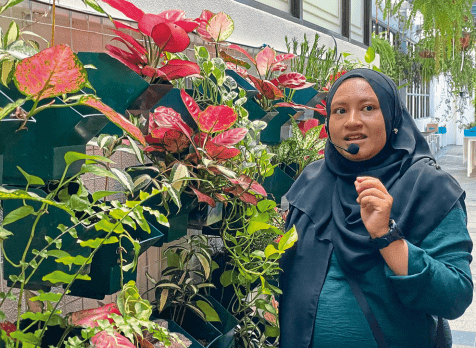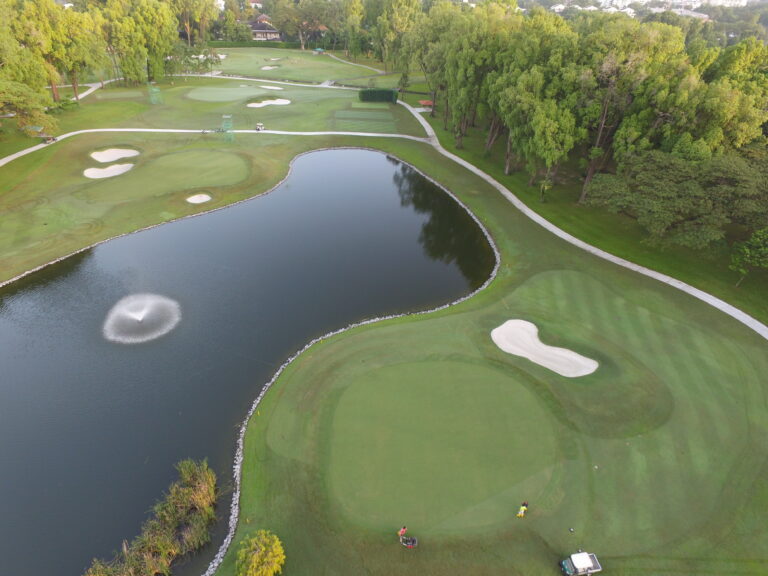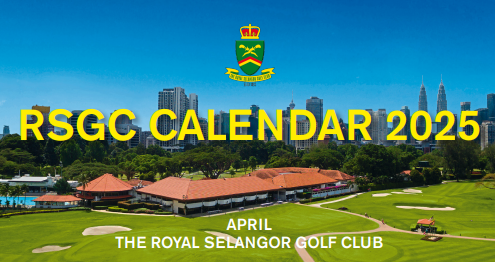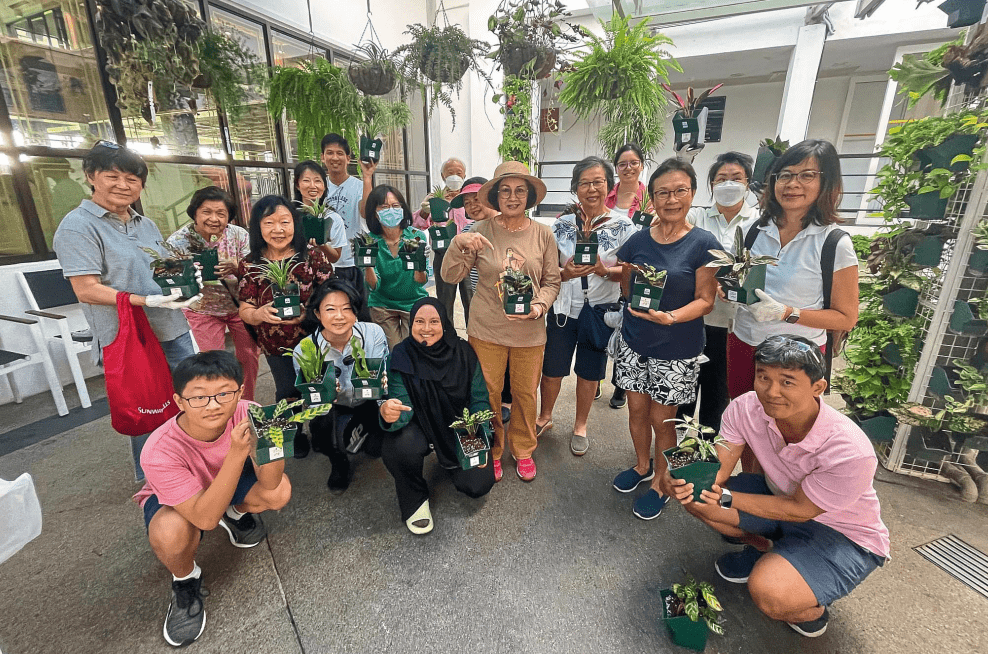
Participants with their repotted plants
The RSGC Morning Courtyard Garden Tour held on 12 December 2023 was a delightful blend of nature exploration and hands-on learning during our recent gathering. As the resident horticulturist, I had the pleasure of sharing insights on the creation of our beautiful vertical garden wall and hanging plants project, a labour of love that took nearly half a year to cultivate. This event brought together garden enthusiasts eager to delve into the world of vertical gardening and appreciate the serene beauty of our courtyard garden.
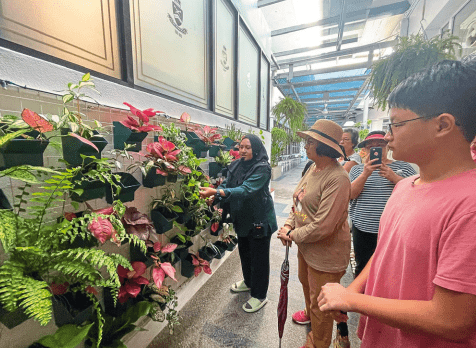
Vertical wall plants
Our journey commenced in the Banquet Hall, where all participants gathered to receive a comprehensive briefing about the day’s agenda and the development of our courtyard garden. As we stepped into the garden, the enchanting world of vertical plants and carefully chosen hanging plant species unfolded before our eyes. In a unique twist, we also informed participants about a repotting workshop, to enhance their gardening knowledge even further.

Explaining the differences of Huperzia sp
STATION 1: VERTICAL PLANTS ON WALL
Our first station introduced participants to the art of vertical gardening. We explored the three fundamental components of establishing a vertical wall garden: plants, media, and irrigation systems. Vital to the success of vertical greenery are plant selection and proper irrigation techniques. Participants learned how to select the right plants, taking into account system type, design intent, environmental factors, budget constraints, and expected maintenance levels. We emphasized the importance of drainage outlets to prevent unsightly puddles at the base of the wall.
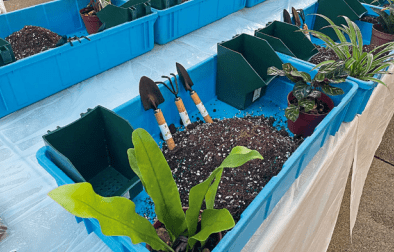
Tools and material prepared for the workshop
Soil media selection is critical, balancing nutrient content and weight. From my experience as the resident horticulturist, I recommended misting systems over sprinklers to provide essential air moisture and maintain a cool environment in our courtyard garden, reducing manual watering by up to 80 percent.

Ready to repot
Considering factors like shading and aesthetic appeal, we experimented with different plant varieties and sizes, including Philodendron cordatum, Nephrolepis exaltata, Episcia sp., Epipremnum N’joy, Aglaonema etta rose, Calathea makoyana, and more. Each plant was carefully chosen for its suitability on the wall and the unique visual effects it would contribute.
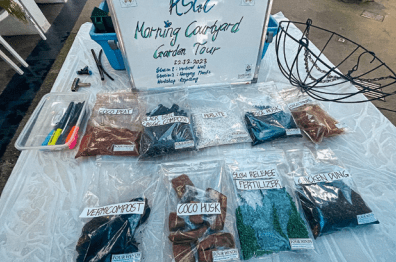
Types of substarate used in the courtyard garden
We also explored Staghorn fern species, including P. Alcicorne, P.Ridleyi, P. Holttumll, and P. Superbum, highlighting their hardiness but acknowledging the time they require to mature. Whilst these ferns thrive in tropical environments where they can absorb nutrients from the air, replicating this in our courtyard garden proved challenging.
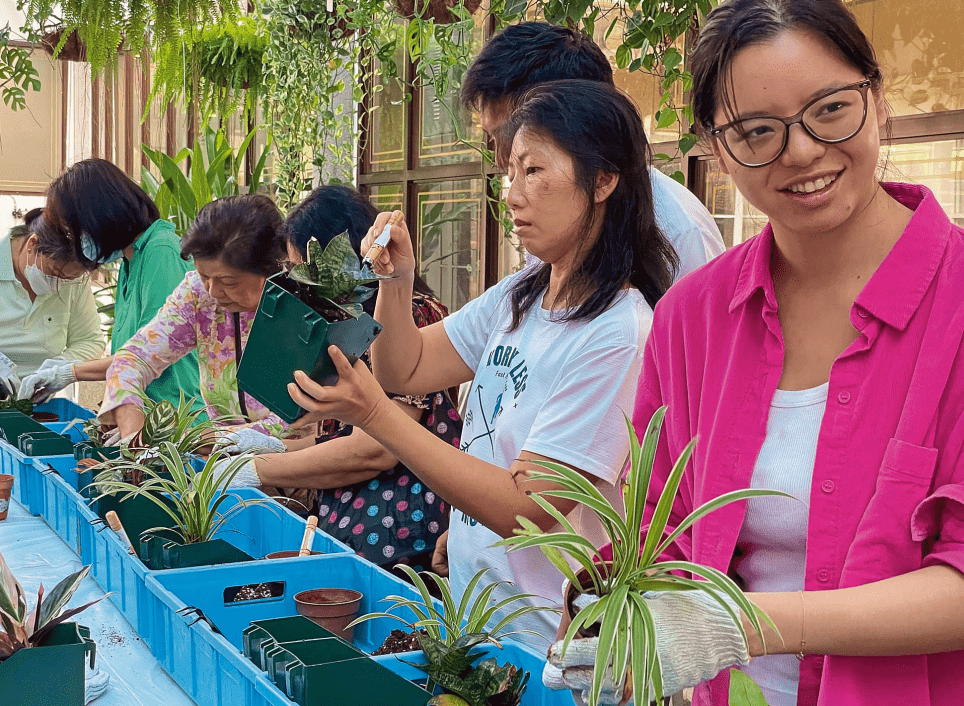
Repotting session
STATION 2: HANGING PLANTS ON THE PERGOLA
The second station immersed participants in the world of hanging plants, with an array of unique varieties adding aesthetic charm to our garden. Proper plant selection for hanging planters was emphasized; heavy or tall plants are not suitable for hanging arrangements. Maintaining hanging baskets, with their lightweight potting mixes that dry out quickly, was discussed. We encouraged participants to water their hanging plants when the soil surface feels dry to the touch.
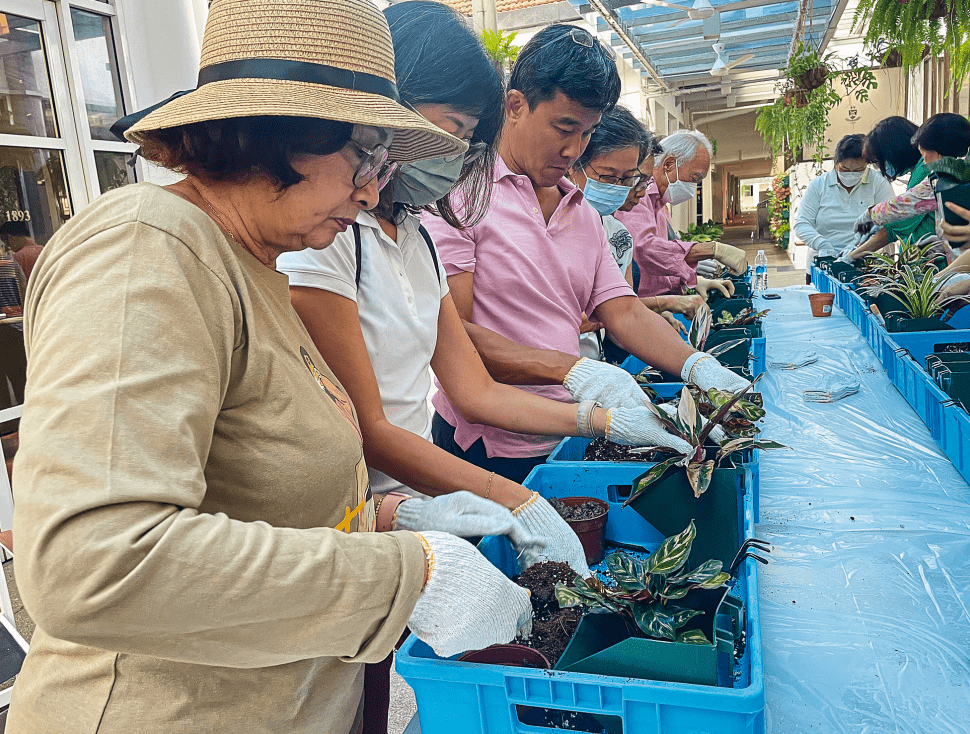
Selecting an ideal location with adequate sunlight was essential, as high hanging plants require more water. Fertilization was also stressed, with a recommendation to use slow-release fertilizer for consistent nourishment.
Participants were introduced to various hanging plant species, including Spider plants, Pothos sp., Rhaphidophora pertusa, Episcia, purple oxalis, Hoya variegated (heart leaf), Monstera sp., Dallas fern, Lipstick, and Philea baby tears. We shared insights on their care and unique features.

Thank you for our gift Farizaa
VERTICAL GARDEN WORKSHOP
The workshop offered participants a deeper understanding of the benefits of vertical gardens. They learned how to repot small plants into vertical planter pots, ensuring lightweight media conducive to plant growth. We discussed different substrate types and their purposes, showcasing samples of coconut peat, coconut husk, coconut fiber, perlite, rice husk, and essential organic nutrients such as organic chicken manure and vermicompost. The use of compost derived from the golf course was also explained.
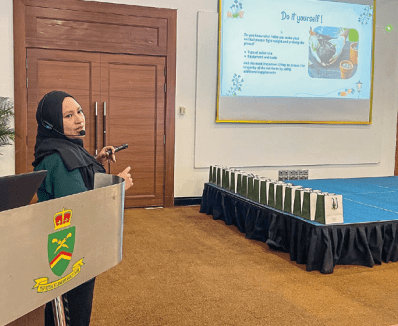
The workshop
Participants were provided with plant materials and tools to repot plants into the green vertical planter boxes, fostering a sense of ownership in our courtyard garden. The experience allowed them to mix the media, ensuring the right soil level to prevent leaching.
We concluded the event with a group photo session, capturing the participants with their newly repotted plants as lasting memories. Refreshments were served in the Banquet Hall, followed by a quiz session where winners received a set of DIY tools and media for home gardening projects.
Participants who wished to take home RSGC’s compost collected their bags at the landscape nursery, leaving the event participants delighted and eagerly anticipating our next nature walk.
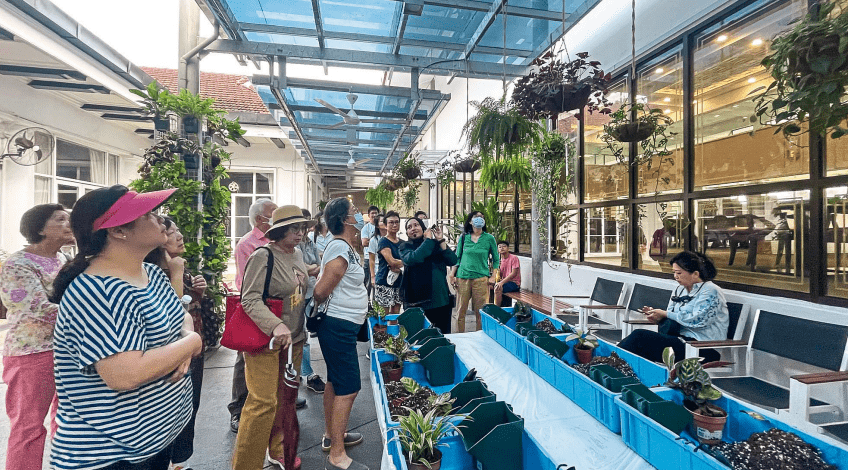
For further inquiries or information, please do not hesitate to contact your horticulturist at nur.farizaa@rsgc.com.my.

